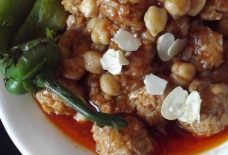SOURCE: SMITHSONIAN.COM
BY: JASON DALEY
Seamus Blackley, best known as one of the minds behind the Xbox, is a hardcore amateur baker and Egyptologist. Recently, he decided to combine his two hobbies. As Alix Kroeger at the BBC reports, along with University of Queensland archaeologist and ancient brewing expert Serena Love, he negotiated access to 4,500-year-old Old Kingdom vessels used to bake bread and make beer from the Peabody Essex Museum and Museum of Fine Arts in Boston.
Richard Bowman, a doctoral candidate in microbiology at the University of Iowa, helped in the process, injecting a nutrient solution into the ceramics, which reawakened dormant yeasts. The team then extracted the yeasty liquid. While most of the yeast was sent off to a laboratory for study, Blackley took one sample home, setting out to recreate the taste of ancient Egypt by baking with its yeast.
“It’s such a magical thing, to think we can share food in a rather genuine way with our distant ancestors,” Blackley writes on Twitter.
While it’s possible that humans began making some form of bread as early as about 30,000 years ago, they didn’t begin using yeast to produce beer, wine and leavened bread until about 6,000 years ago. Since then, yeast used for producing food has undergone a lot of changes, with strains from around the world combining with one another, and picking up mutations along the way.
It’s likely that the yeast the team captured is the real deal. While previous experiments have scraped the interiors of the bowl, which could easily be contaminated, and other techniques destroy the bowls to gain access to the yeast, this method is non-invasive. “You pump a fluid in carefully with a syringe and some sterile cotton in contact with the ceramics. It soaks in and you vacuum it back out,” Bowman tells Will Pavia at The Times.
Genomic sequencing will conclude whether the ancient yeast is the real deal or contaminated with modern microbes. In the meantime, Blackley couldn’t resist baking with his sample. He cultivated the yeast for a week using unfiltered olive oil, hand-milled barley and einkorn, one of the earliest forms of wheat, until he had a starter, like that used to make sourdough bread.
Sarah Cascone at artnet News reports he then mixed the starter with barley, einkorn and kamut, all of which would have been at an ancient Egyptian baker’s disposal. “Modern wheat was invented long after these organisms went to sleep,” he says. “The idea is to make a dough with identical ingredients to what the yeast ate 4,500 years ago.”
Blackley documented his bread-baking adventure on his Twitter profile. He noted that the scent as it baked was different from other loaves of bread he’s made with the same combination of ancient grains, but with modern yeast. “It’s much sweeter and more rich than the sourdough we are used to. It’s a big difference,” he wrote.
Describing the look and taste of it, Blackley noted that the crumb “is light and airy,” particularly for a 100 percent ancient grain loaf. “The aroma and flavor are incredible,” he added. “I’m emotional. It’s really different, and you can easily tell even if you’re not a bread nerd. This is incredibly exciting, and I’m so amazed that it worked.”
That being said, Blackley was careful to note that this loaf was just for practice, and he’s sure some modern yeast likely contaminated the sample. He hopes to try again with a purer strain of Old Kingdom yeast and has future plans to work with Love to replicate the tools and baking methods, like cooking bread in ceramic pots, used by the ancient Egyptians. He also wants to work with a ceramicist to recreate the cooking vessels. Already the team has secured permission to collect samples from cooking pots in other museums, and they hope to gather yeast from the Old, Middle and New Kingdoms, each separated by 500 to 700 years, to understand if and how the yeasts changed over time.
Luckily, we have something to go along with the Pharaoh’s bread. Last year, the British Museum tasked a team with figuring out how to brew beer using ancient Egyptian methods, which produced suds similar to white wine.









